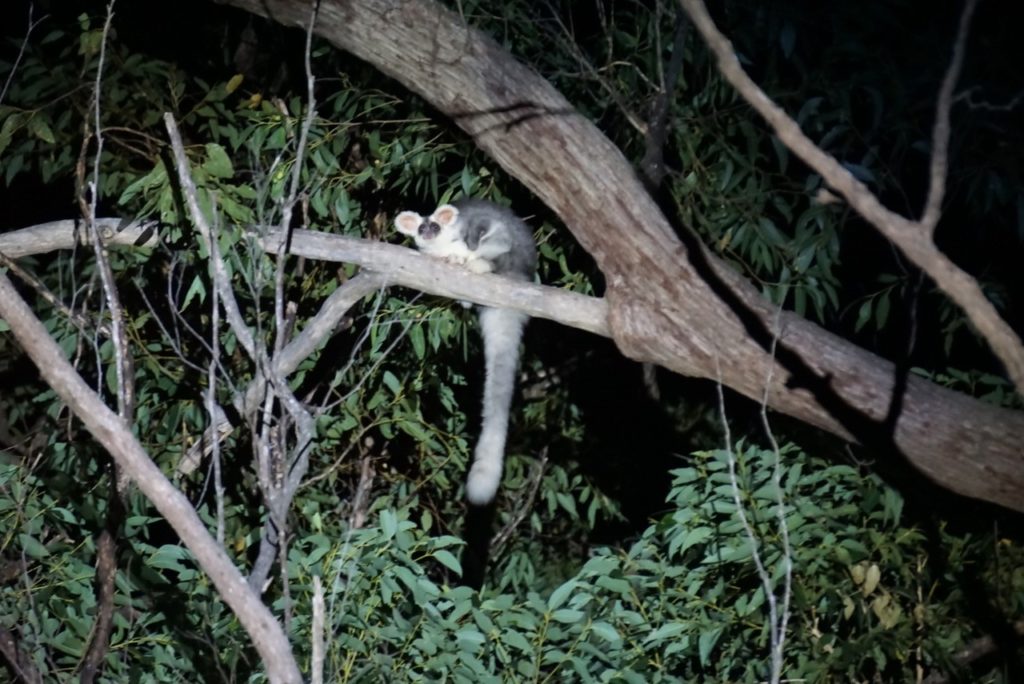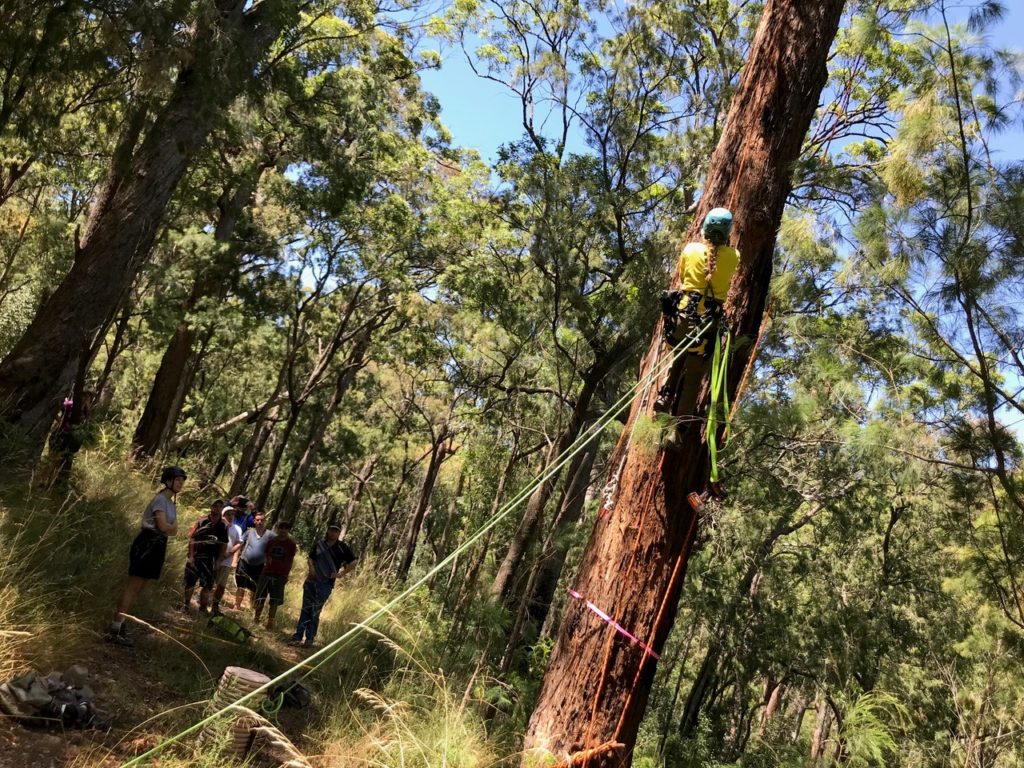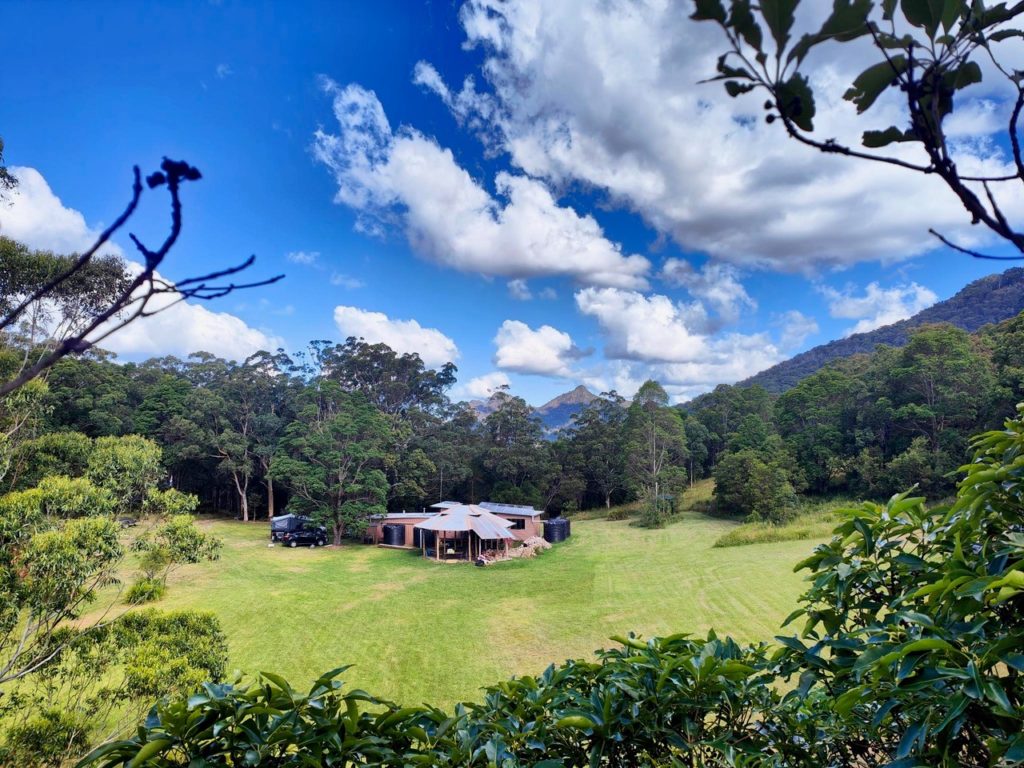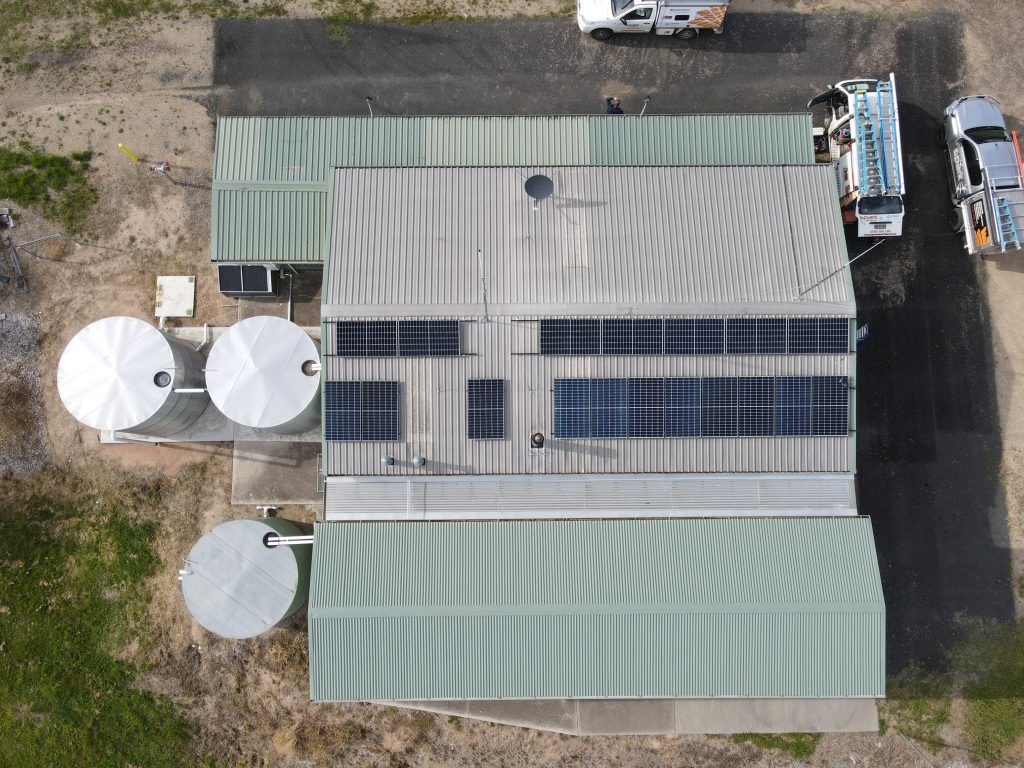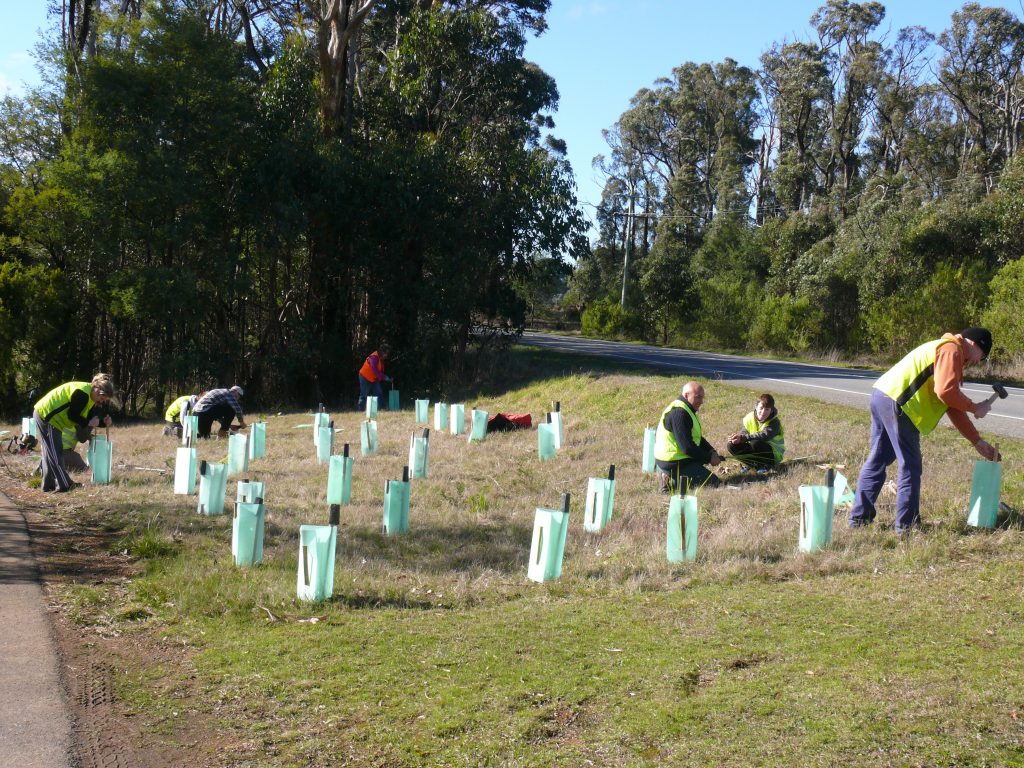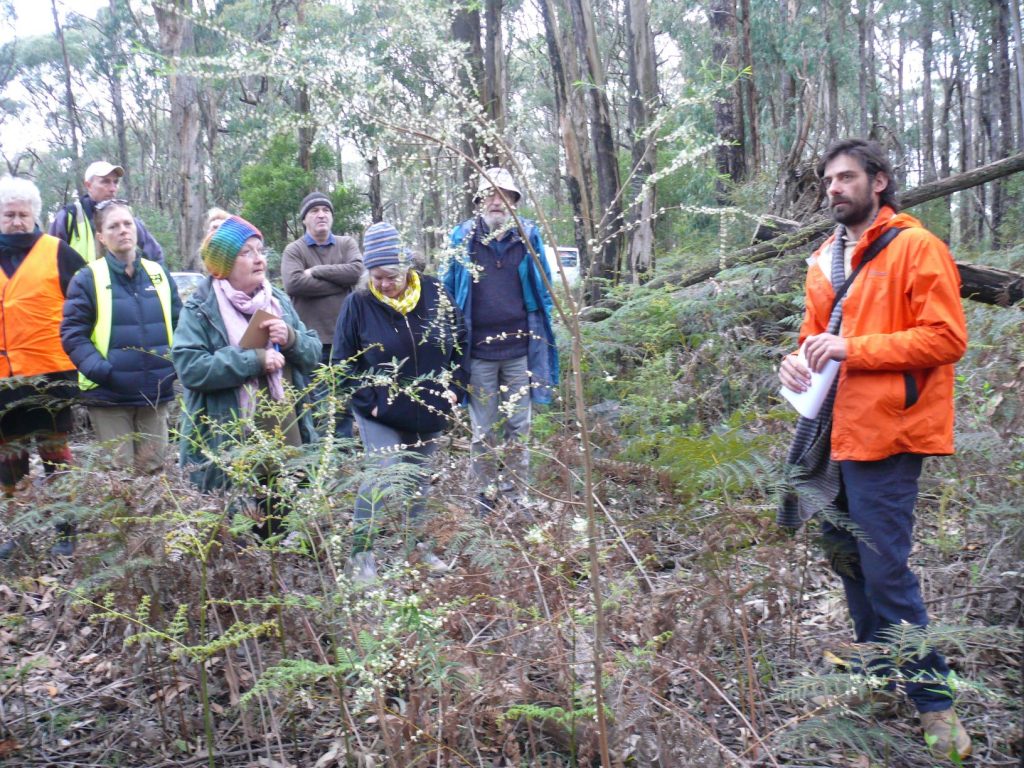Foundation for Rural & Regional Renewal (FRRR)
Boonah and District Landcare Association has taken up the challenge to develop a home-grown housing solution for Mount Barney’s greater gliders housing crisis created by the Black Summer bushfires that swept through local bushlands in 2019-20.
Greater gliders live in tree hollows and like to move around a little, so one glider needs multiple tree hollows to hide, sleep and raise a family. There is no fast solution for gliders affected by the Black Summer fires. Many nests were destroyed, and it can take a hundred years for forest trees to age and develop suitable hollows.
Artificial nest boxes made using standard plywood construction are not suitable for the greater gliders, who are easily stressed by heat. The innovative Landcare nest tubes are lined and painted white with a high-tech reflective paint for additional heat control.
Project Coordinator Ian Beale explains, “It’s been a huge effort to design something durable, affordable, and easy to install. We’ve had advice and feedback from experts at southern universities and we engaged a scientist from the University of Wollongong to oversee installation of nest tubes at Bartopia. We are serious about evaluating this new design.
“It was a community project supported by grant funds and volunteer efforts. A real team effort, and so many locals have been involved”, he said.
Scenic Rim Regional Council provided funds for construction materials. Volunteers from Boonah and District Landcare, Carinity Fassifern Community Centre and Maroon State School help build the tubes. The Wettenhall Foundation supported a small number of local climbers to gain the qualifications and insurance they need to help landowners with installations, while a $24,014 Strengthening Rural Communities Prepare and Recover grant funded by Global Giving contributed to the survey work and installation of nest tubes, as well as technology and expertise to evaluate how they are used over the next 12 months.
Twenty-three tubes were installed in March 2023 around Bartopia Nature Refuge adjacent to Mount Barney National Park. Clients of the Fassifern Community Centre visited Mt Barney to observe a nest installation, and students later watched a demonstration installation at Maroon State School.
The SRC grant also supported teachers, parents and students to camp overnight at Mt Barney and enjoy a spotlighting opportunity, for the children to see personally the greater and other gliders in their natural habitat (much to their delight).
The only significant thing left is for the scientist-arborists to return next February-March to monitor the installed nests and cameras.
Nestled in the Central Tablelands of New South Wales, a two-hour drive from Sydney and just over the Great Dividing Range, lies the small town of Tarana. It is surrounded by local state forests and important historical sites such as the Jenolan Caves. The Tarana Volunteer Bushfire Brigade protects the Tarana community and surrounding districts from fires that threaten life and land. During the 2019/20 Black Summer bushfires, the brigade worked tirelessly at this task.
The Black Summer fires underscored the need for brigades to be ready and prepared for urgent fire defence. However, a review into the fires found that loss of power to brigade sheds affected the ability of emergency services to be as responsive as was needed.
An incident in 2021, where a power pole was damaged near their shed, further highlighted this issue for the Tarana Brigade, as they went without power for several weeks. A small group of volunteers was left to man a generator to keep power going, tying up valuable resources needed elsewhere.
Through the Volunteer Emergency Services Fund (VESF) grant program, the Tarana Brigade found a solution to their power problem. Installing a solar powered battery backup system ensured ongoing continuity of their power supply, with the added benefit of producing green energy and reducing operational costs.
Thanks to the generous contribution of a private donor, a $25,000 VESF grant provided the brigade with the certainty of running their fire shed unencumbered: trucks will stay charged, roller doors and fast fill pumps will remain operational, security systems and fridges for crew supplies will continue to run. This means that the Tarana Volunteer Bushfire Brigade will be ready to support their community whenever they are needed.
Grant awarded to Kinglake Ranges Neighbourhood House Inc
FRRR has awarded an out-of-session grant for $30,000 to the Kinglake Ranges Neighbourhood House Inc, via the Grants for Resilience & Wellness – Kinglake Ranges program, funded by the Victorian Bushfire Appeal Fund (VBAF).
The project, titled “Co-designing our Future: Community Conversations – Kinglake Ranges Talks”, continues the ongoing support for the Kinglake Ranges communities in their long-term recovery and rebuilding following the Black Saturday bushfires that devastated the region in 2009. Specifically, the grant aims to strengthen the community’s ability to identify opportunities and priorities for the Kinglake Ranges through place based community-led consultation.
In the 12 years since the 2009 Bushfires, almost half of the residents of Kinglake are new to the area. So the work of Kinglake Landcare Group is important in helping to improve the new residents’ understanding of their natural environment and the importance of fire safety. As a subsidiary of Kinglake Ranges Neighbourhood House (KRNH), Kinglake Landcare Group provides support to the natural environment of Kinglake by undertaking community engagement activities and promoting sustainable agriculture.
With support from our Grants for Resilience & Wellness – Kinglake Ranges (GR&W Kinglake) program, Kinglake Landcare Group was able to make quite an impact on the community with their organised activities. The Group used their GR&W Kinglake grant to facilitate bushwalks and workshops to provide a practical way for residents to become familiar with the native flora, including how to care for it.
Geordie Scott-Walker, a botanist from Wildlife Experiences, guided a group of 22 enthusiastic participants on a walk from Captains Creek Road. Along the way Geordie would stop and identify local plants, explaining each ecosystem and the importance of the relationships between plants and the environment. After a quick lunch break, the walkers were then led to the nearby Wombelano Falls where the lesson continued. Social media posts allowed residents from surrounding areas, including Whittlesea and Strath Creek to participate in the activity as well.
The grant also made it possible for Kinglake Landcare Group to hold a propagation workshop with horticulturalist, Michael Cincotta, from the Latrobe Wildlife Sanctuary. Residents were shown how to grow indigenous flora through seeds and cuttings. The pots, soil and stakes were provided at the workshop. Attendees were able to take home their own small clipping of the Round-Leaf Pomaderris plant, which is endangered in the Kinglake area.
The success of these events prompted Kinglake Landcare Group to schedule more walks that have been postponed due to the coronavirus. With the enthusiasm and support from other nearby towns, the natural environment of Kinglake ranges will continue to improve and flourish.
By attending either of the activities these local communities were able to build on the knowledge and understanding of their natural environment. The hope is that each resident who participated in the walk or workshop will continue to share the information with others. The skills learnt at the bushwalk and the workshop have given individuals the power to help maintain the natural flora and take an active role in their community.

